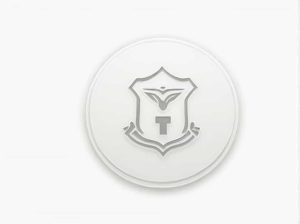Plagiarism is a serious issue in academic professional and creative writing. It involves using someone else’s work or ideas without proper credit. Whether intentional or accidental plagiarism can lead to severe consequences including academic penalties legal issues and loss of credibility.
Understanding plagiarism and how to avoid it is essential for students researchers writers and professionals. This topic will explain what plagiarism is its types its consequences and effective ways to prevent it.
1. What Is Plagiarism?
A. Definition of Plagiarism
Plagiarism is the act of presenting another person’s work ideas or words as one’s own without proper acknowledgment. This includes copying text paraphrasing without citation and even reusing one’s previous work without disclosure (self-plagiarism).
B. Why Is Plagiarism a Problem?
Plagiarism is considered unethical because:
- It violates intellectual property rights.
- It disrespects original authors.
- It damages credibility and reputation.
- It can result in academic or legal penalties.
2. Types of Plagiarism
There are several types of plagiarism some more obvious than others.
A. Direct Plagiarism
This is word-for-word copying of another source without citation. Example: Copying a paragraph from a website and pasting it into an essay without acknowledgment.
B. Self-Plagiarism
This occurs when a person reuses their previous work without citation or permission. Example: Submitting the same research paper for multiple courses.
C. Mosaic Plagiarism (Patchwriting)
This involves copying phrases from different sources and slightly modifying them without proper citation. Even if words are changed failing to credit the source is still plagiarism.
D. Accidental Plagiarism
Many people plagiarize unknowingly by forgetting to cite sources or improperly paraphrasing. Lack of understanding does not excuse plagiarism.
E. Paraphrasing Plagiarism
Even if you rewrite a sentence in your own words it is still plagiarism if you don’t cite the original source.
3. Consequences of Plagiarism
Plagiarism can have serious academic professional and legal consequences.
A. Academic Consequences
- Failing grades or course dismissal
- Expulsion from academic institutions
- Loss of scholarships and academic opportunities
B. Professional Consequences
- Loss of credibility in the workplace
- Termination from a job
- Legal action and copyright infringement lawsuits
C. Legal Consequences
- Copyright violations can result in lawsuits
- Financial penalties and damage claims
- Inability to publish in reputable journals
4. How to Avoid Plagiarism
Avoiding plagiarism requires proper research habits ethical writing practices and the use of citation techniques.
A. Cite Your Sources Properly
One of the easiest ways to avoid plagiarism is by correctly citing all sources using a recognized format such as:
- APA (American Psychological Association)
- MLA (Modern Language Association)
- Chicago Manual of Style
B. Use Quotation Marks for Direct Quotes
If you use someone’s exact words always place them in quotation marks and provide a citation.
Example:
“Plagiarism is the representation of another author’s language thoughts ideas or expressions as one’s own original work” (Smith 2022).
C. Paraphrase Correctly
Paraphrasing means rewriting information in your own words while keeping the original meaning. However you still need to cite the source.
Example of improper paraphrasing (plagiarism):
“Plagiarism happens when someone copies another person’s ideas without credit.”
Proper paraphrasing with citation:
According to Smith (2022) plagiarism occurs when individuals fail to credit the original source while using someone else’s ideas.
D. Use Plagiarism Detection Tools
There are various plagiarism checkers that help identify copied content such as:
- Turnitin
- Grammarly Plagiarism Checker
- Quetext
These tools compare your work with millions of online sources and academic databases.
E. Keep Track of Your Sources
When conducting research always record where you found information to avoid accidental plagiarism. A good habit is to create a bibliography as you work.
F. Understand Common Knowledge
Not all information needs citation. Common knowledge such as historical facts or widely accepted truths does not require referencing.
Example:
- “The Earth revolves around the Sun.” (No citation needed)
- “Plagiarism is a violation of academic integrity.” (No citation needed)
5. Best Practices for Ethical Writing
To develop ethical writing habits follow these principles:
A. Plan Your Work in Advance
Rushing often leads to accidental plagiarism. Allocate enough time for research writing and citation.
B. Read and Understand Before Writing
Don’t copy and paste. Instead read multiple sources understand the concept and write in your own words.
C. Get Permission for Reusing Content
If you want to reuse previous work seek permission or clearly indicate that it was previously published.
D. Seek Guidance When in Doubt
If unsure about citing sources consult a teacher professor or style guide to avoid unintentional plagiarism.
Plagiarism is a serious issue that can lead to academic professional and legal consequences. By understanding its different types and learning how to avoid it writers can maintain integrity and credibility in their work.
Using proper citation paraphrasing correctly and utilizing plagiarism detection tools are essential steps in preventing plagiarism. Developing ethical writing habits ensures originality and respect for intellectual property fostering a culture of honesty and professionalism.



